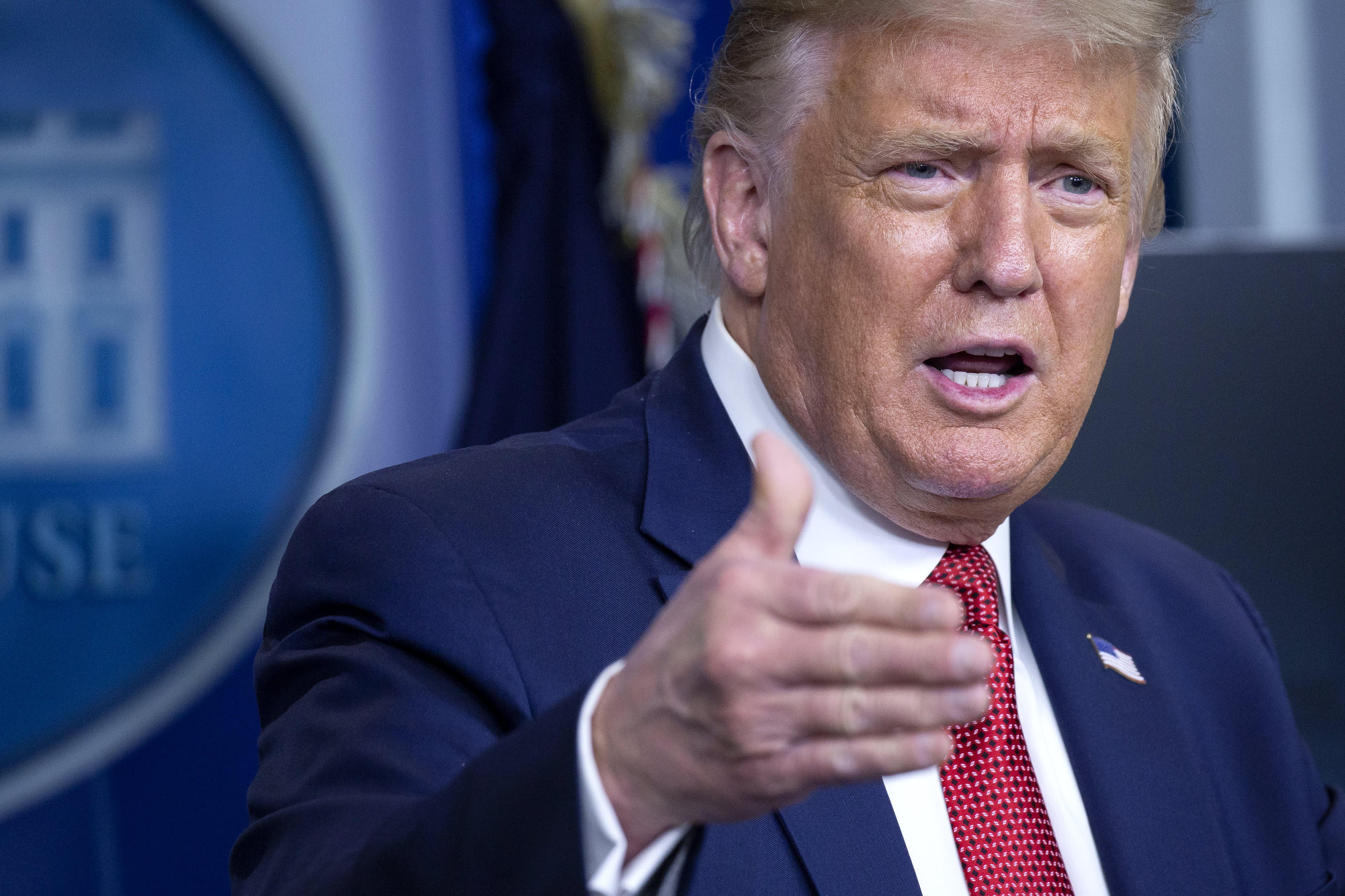Trump's $400 unemployment boost would give Americans $708 a week, on average

President Donald Trump speaks during a news conference at the White House on Monday, Aug. 10.
Stefani Reynolds/CNP/Bloomberg via Getty Images
President Donald Trump's executive order to boost unemployment benefits would give jobless Americans $708 a week in total aid, on average.
Yet some may get less or none at all, given many caveats to the plan.
The president's order, signed Saturday, came after a $600-a-week federal supplement to state unemployment benefits lapsed at the end of July, leaving millions of families without additional aid they relied on to help pay bills.
The order was one of four measures, which included aid around evictions, payroll taxes and student loans, aimed at expanding economic relief for Americans amid the coronavirus pandemic. Some experts are skeptical of the ultimate financial help the orders will deliver.
$400 unemployment benefits
Roughly 30 million Americans are collecting unemployment benefits, between traditional state programs and a new federal program for the self-employed and other workers, according to the Labor Department.
White House officials and senior Democratic lawmakers have been working toward an agreement for two weeks on additional coronavirus relief legislation, but the talks stalled amid disagreements over the scope of the bill.
House Democrats passed legislation in May to continue the $600 weekly enhancement until early next year. Senate Republicans unveiled their counteroffer — an extra $200 a week — just two weeks ago, right before the aid was set to lapse.
$300, $400 or nothing?
Trump's $400-a-week offer falls in the middle, and may ultimately be eclipsed by any forthcoming relief deal.
There are several caveats to the executive order.
For one, there are questions as to its legality.
Even if it doesn't get caught up in lawsuits, many Americans wouldn't get the $400 at all. Those collecting less than $100 a week in state benefits wouldn't be eligible for the additional federal aid, according to the executive order.
That amounts to about 6% of people collecting traditional state unemployment insurance, according to an estimate by Eliza Forsythe, a labor economist and assistant professor at the University of Illinois at Urbana-Champaign.
In other words, about 950,000 people wouldn't get additional federal jobless aid, according to an analysis of most recent Labor Department data.
All states set minimum benefit levels, and most set that floor below $100 a week. Lower-wage and part-time workers are among the groups that tend to get the minimum payment most often.
In addition, those who do get federal assistance may get less than $400. The federal government is contributing just $300 of the total, with states left to somehow kick in the rest — not a given, especially due to their already-strapped budgets.
That means some recipients may wind up with an extra $300 instead of $400.
The federal boost also wouldn't be automatic — states would have to request the assistance and have a system in place to deliver the aid.
Trump is using $44 billion from the government's $70 billion Disaster Relief Fund — typically deployed in the wake of weather disasters and the like — for the federal government's share. The money would be administered by the Federal Emergency Management Agency.
Eligibility for the extra federal benefits would be retroactive to the week ended Aug. 1. The federal supplement would remain in place until Dec. 6 or the funding runs out, whichever happens first, according to the executive order.
The Committee for a Responsible Federal Budget estimates that the $44 billion would last five weeks.
Source
Check Our More
No comments